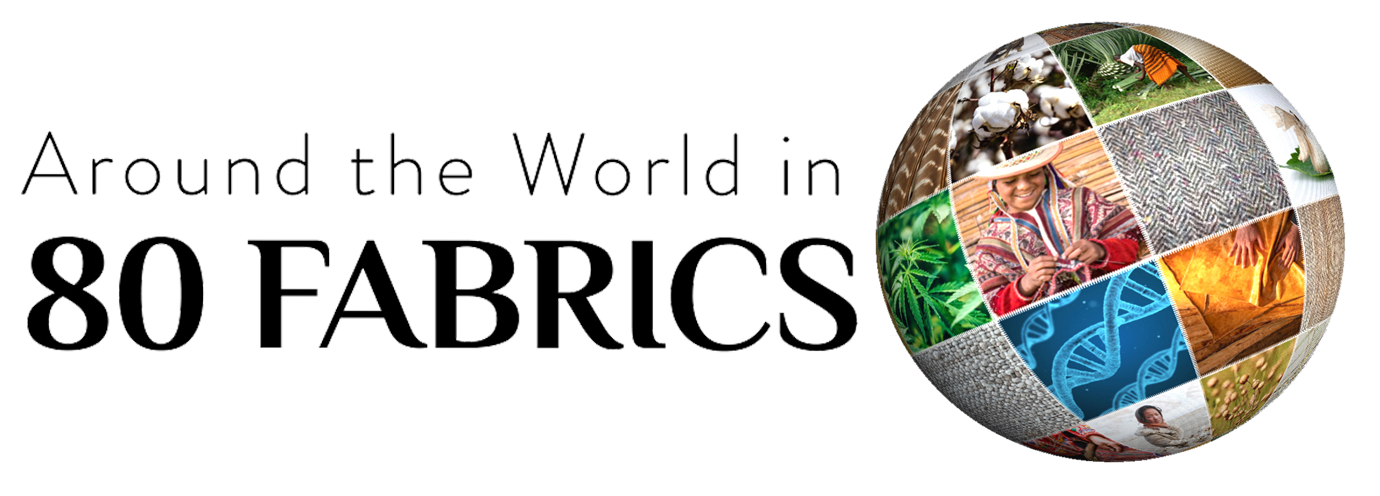
FABRIC: CASHMERE
Regions: Mongolia
Fabric Name:
Cashmere wool
Origin:
Cashmere Goat, Alasan (Alashanzuoqi), Arbus, Erlangshan, Hanshan and Wuzhumuqin, Capra hircus
Who made our fabric:
Togmidshiirev Enkhbold and Munguntsetseg Lkhagvasuren, Ulaanbaatar, Mongolia
One part of our Quilt of 5 Jewels
Natural history and ecology:
Cashmere goats are not a special breed. The term actually refers to any goat whose soft winter undercoat can be used for cashmere fibers. During the spring months in Mongolia, the cashmere is harvested from the goats either through shearing or combing. Goats only produce this soft undercoat in cold climates, so as temperatures climb, there will be less of this fleece produced. Yet another consequence of climate change.
What makes this so special:
Mongolian cashmere is the best in the world because it's so cold that the goat develops tighter fur. The Mongolian traditional nomadic way of coexisting with livestock sets them apart from cashmere producers elsewhere. The cashmere sourced from Mongolian land is from goats that are cared for and treated humanely.
There are close to 30 million of these goats grazing on the steppes in Mongolia, along with 32 million sheep, 4.7 million cattle (which includes half a million yaks) 4.2 million horses, and half a million Bactrian camel.
Because of the frigid temperatures in the country that impact the fibers, Mongolian cashmere goat wool is considered the best in the world.

“We are trying to send this message to remind people of the life that is close to nature. We feel more connected with our surroundings in the vastness of Mongolia. We feel like we are kind of sending this message to others but not in a preaching way, just reminding people. Gently.”
— Togmidshiirev Enkhbold and Munguntsetseg Lkhagvasuren/Cashmere wool
Quilt of 5 Jewels, Mongolia
Togmidshiirev Enkhbold and Munguntsetseg Lkhagvasuren
Created by talented Mongolian Artists husband and wife, Togmidshiirev Enkhbold and Munguntsetseg Lkhagvasuren, this gorgeous textile art piece is a celebration of Mongolia’s non-petroleum textile alternatives. Togmidshiirev Enkhbold is a prominent urban-based artist whose work addresses contemporary Mongolian issues like mining and pollution. His large-scale canvases are created using dung, felt, shrubs, ash, rust, animal skin, and tripe. His wife, artist Munguntstetseg Lkhagwasuren, works in many forms of media including horse hair fiber sculpture. These two artists journeyed across the expansive Mongolian landscape, from the yak herds of the Khangai mountains to the Bactrian camels of the vast Gobi Desert. Along the way, they gathered materials from what is known as Mongolia’s 5 Fiber Jewels -- the sheep, yak, camel, goat, and horses—and created this one-of-a-kind precious biodegradable felt quilt. During their journey, the artists gained deep insight into the ecological relationship between the herders, their animals, and felt-making. Recognized as a UNESCO Intangible Cultural Heritage, this 3000-year-old tradition remains a living art. Enkbold and Munguntsetseg met with nomadic herdsmen and shared discussions about petroleum fiber pollution, the health of the land, and the ecological symbioses that keep them alive in such extreme temperatures ranging from -45F to 112F. The reverence for these animals and the age-old textile tradition of feltmaking is beautifully shared in this Mongolian poem.
“May the felt be stronger than bone
And whiter than fresh snow
May the shears be sharp
May the fleece be fluffy or
May the shears be sharp
May the sheared sheep
Be tens or hundreds of thousands
May the dust from these sheep
Rise up to the sky”



